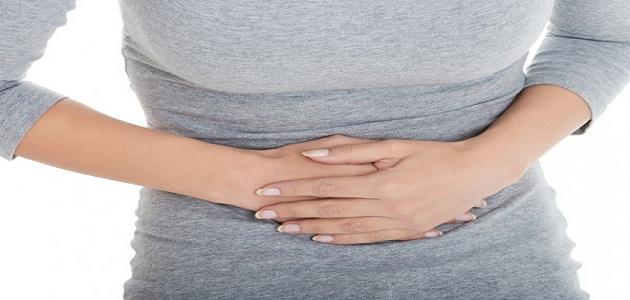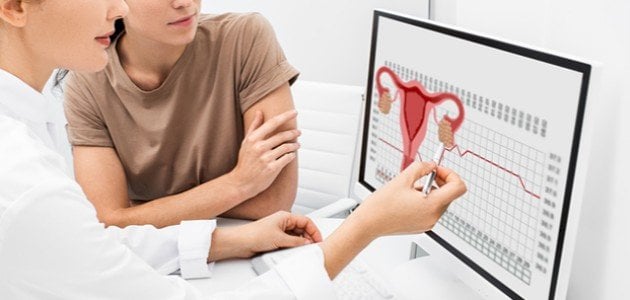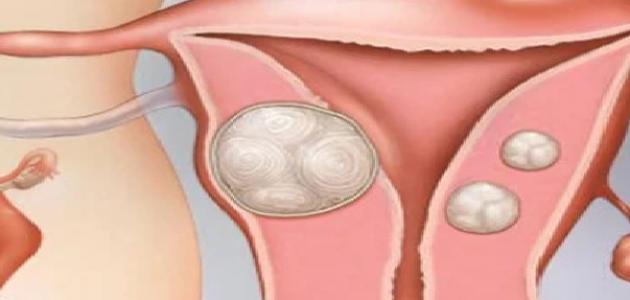menstruation
Menstruation, or the cycle, or menstruation, or the menstrual cycle (in English: Menstruation), is part of the menstrual cycle that occurs in females, during which natural vaginal bleeding occurs that contains blood and part of the tissue lining the uterus. To understand the matter, it must be stated that the body Female
He prepares himself for pregnancy on a monthly basis, and failure to become pregnant leads to the uterus expelling or shedding its lining to the outside through the vagina. It is worth noting that the occurrence of menstruation for the first time begins at approximately the age of 12 years, but this age varies from one female to another, as menstruation may begin to occur. At a younger or older age, delaying menstruation until the age of 15 is usually normal and does not cause concern. Menstruation continues to occur monthly until the female reaches menopause, which may occur in the age period between the late forties and the mid-fifties. It is noteworthy that the occurrence of menstruation may stop suddenly at this stage in a few cases, while in most cases a decrease in the frequency of its occurrence is observed over a period extending for months or years before it stops completely.
The difference between menstruation and menstrual cycle
Although individuals usually use the term cycle to express menstrual blood that is shed for several days a month, the precise scientific expression uses the term menstrual cycle to describe the set of sequential events that occur in the female body with the aim of preparing it for the possibility of pregnancy on an approximately monthly basis, as the average cycle is The monthly period is 28 days, but this period can range between 21-35 days, and menstruation, represented by bleeding, is part of this cycle, so that the first day of menstruation determines the beginning of the new menstrual cycle.
Read also:Accelerate the menstrual cycle
How does menstruation occur?
The menstrual cycle and the sequence of its events are attributed to changes in the levels of female hormones in the body, whether they increase or decrease. Hormones are defined as chemical messages. Examples of these hormones include those secreted by the ovaries, the most important of which are estrogen and progesterone. The ovaries and the pituitary gland secrete these hormones during certain times during the menstrual cycle, and the reproductive system organs respond to them in certain ways. For example, these hormones cause the lining of the uterus to build and grow, which means it is ready to receive the fertilized egg if it exists. Then it is implanted in it to begin to develop, but if it is not present, the lining dissolves and menstrual bleeding, known as menstruation, begins. This process usually requires a period of up to approximately a month, which explains the reason for the female’s menstrual bleeding approximately once a month, and after that it is repeated. The process again.
It is worth noting that the hormones responsible for building the uterine lining are the same ones that cause a mature egg to be released from one of the ovaries every month, and this process is known as ovulation, as the egg travels through a thin tube called the fallopian tube to reach... To the uterus, if sperm (in English: sperm cell) is present in the uterus, fertilization occurs and the fertilized egg is formed, and the fertilized egg is attached to the wall of the uterus, to develop over time and become an embryo. However, if the egg is not fertilized, this leads to the breakdown of the lining, as we mentioned, and bleeding occurs. The natural condition known as menstruation.
Read also:The difference between period pain and pregnancy pain
Symptoms associated with menstruation
Menstruation is accompanied by the appearance of a group of symptoms felt by the female, which may vary from month to month. Among these symptoms are the following:
- The appearance of acne.
- Pain in the back and lower abdomen.
- Feeling hungrier than usual.
- Sleep problems.
- Mood swings.
- pain in chest.
- flatulence;
- Premenstrual syndrome, or premenstrual syndrome, is one of the common conditions that usually occurs before menstruation, and includes a group of symptoms that vary in severity, and we explain them as follows:
- Rapid mood swings.
- Insomnia.
- dizziness;
- bloating;
- Isolation and unwillingness to mix with others.
- difficulty concentrating
- pain in chest.
- Tired.
- Other symptoms include joint and muscle pain, headache, fluid retention in the body, constipation, and diarrhea.
Cases that require seeing a doctor
Although many conditions related to the menstrual cycle are considered normal, there are a group of conditions related to the menstrual cycle or menstrual symptoms that require communication with a doctor or health care provider, including:
Read also:Causes of polycystic ovary syndrome and its treatment- Failure to start menstruation even after reaching 16 years of age.
- Menstruation or menstruation stops suddenly.
- Menstrual bleeding continues for more days than usual.
- Increased intensity of menstrual bleeding compared to the usual condition.
- Feeling severe pain that is difficult to bear during menstruation.
- Noticing bleeding between menstruation.
- Feeling suddenly tired or sick after using tampon.
- Suspicion of pregnancy, as it is recommended to see a doctor if intercourse occurs and then notice that menstruation is delayed for a period of no less than 5 days from its usual date.
- Failure to return to menstruation within a period of up to three months after stopping the use of oral contraceptive pills, despite ensuring that there is no pregnancy.
- If there are any questions related to the menstrual cycle or possible pregnancy.
Menstrual-related problems
Some females may experience a number of problems related to the menstrual cycle, or they may suffer from its irregularity. We will explain some of these problems below:
Dysmenorrhoea
Dysmenorrhea is defined as a feeling of pain or cramping in the lower abdomen, and many females suffer from it before and during menstruation, and its severity varies from one female to another. It may only cause minor discomfort for some, and be severe for others. The degree of its impact on a woman’s ability to carry out her daily activities for several days a month, and dysmenorrhea pain may appear due to a group of health problems, such as: uterine fibroids (in English: Uterine fibroids) and endometriosis (in English: Endometriosis), and it can be done here Treating the basic problem in order to reduce the pain of dysmenorrhea. However, if there are no health reasons behind it, it can be said that the severity of dysmenorrhea decreases with age, and it usually improves significantly after childbirth. Dysmenorrhea can be described as follows:
- Lower abdominal pain or cramps that may be severe.
- The feeling of pain begins between 1-3 days before the first day of menstruation. The intensity of the pain reaches its highest degree 24 hours after the start of menstruation, then subsides within two or three days.
- Pain spreading to the lower back and thighs.
- Possibility of feeling nausea, headache, dizziness, and softening of the stool.
Irregular menstruation
Irregular menstruation can be considered normal in two stages: the first is the teenage stage, as teenage girls may suffer from irregular menstruation in the first few years, but they become more regular later on, and the second is the stage that precedes menopause, where this is The stage is a transitional stage that precedes menopause, during which the menstrual cycle becomes irregular over time. Otherwise, you must consult a doctor in the event of an irregular menstrual cycle. The most common forms of menstrual irregularity are the following:
- The length of the menstrual cycle varies more or less compared to the normal rate, so that the time period between the first day of the last menstruation that the female experienced and the first day of the next menstruation is less than 24 days, or more than 38 days.
- The length of the menstrual cycle varies from one month to another, with a difference of more than 20 days.
- Variation in the amount of bleeding, or noticing the appearance of blood clots with vaginal bleeding that are more than 2.5 centimeters in diameter.
menorrhagia
The term menorrhagia (in English: Menorrhagia) expresses a menstrual cycle that is accompanied by heavy bleeding or bleeding for a longer period than usual. Usually, the woman suffering from it is unable to perform the usual activities during the days of the menstrual cycle due to severe blood loss and suffering from cramps, and despite the fact that heavy menstruation It may cause anxiety, but most women who believe they suffer from it do not meet the diagnostic criteria. In any case, it is recommended to see a doctor when suffering from heavy menstrual bleeding, as there are many effective treatments for this condition. Here it should be noted that there are several signs that indicate... The occurrence of menorrhagia, which we mention as follows:
- Menstrual blood flow is so heavy that the sanitary pads or tampons used are completely wet every hour for several hours at a time.
- The need to double the number of sanitary pads used to control menstrual flow.
- The need to change the sanitary pads or tampons used during the night.
- Menstruation continues for more than seven days, unless the woman's menstrual cycle is longer than that.
- Menstrual blood flow with large blood clots.
- Menstruation is so heavy that it prevents the affected woman from performing her usual work and activities.
- Suffering from constant pain in the lower abdomen during menstruation.
- Feeling tired, low on energy, or short of breath.
Absence of menstruation
The term absence of menstruation (in English: Amenorrhea) is applied to one of two conditions: Either the absence of menstruation for at least three consecutive times, or the failure to achieve menstruation despite reaching 15 years of age. As for the reasons leading to its occurrence, pregnancy is the most common cause, and health problems of the reproductive organs or glands responsible for regulating hormone levels in the body are also considered. There are also reasons that lead to the absence of menstruation, so doctors resort to treating the cause that leads to the absence of menstruation to solve the problem. There are a group of other symptoms that may appear in the woman suffering from amenorrhea depending on the cause leading to the injury, including the following:
- The appearance of milky discharge from the nipple.
- hair loss;
- headache;
- Changes in vision.
- Increased facial hair.
- Pelvic pain.
- the appearance of acne;









